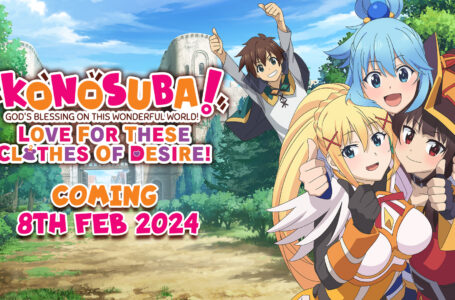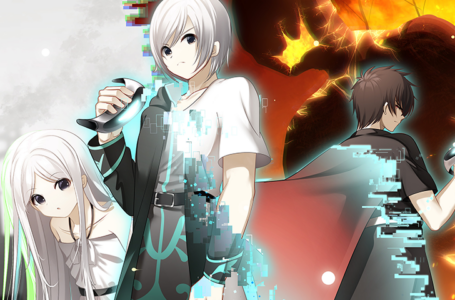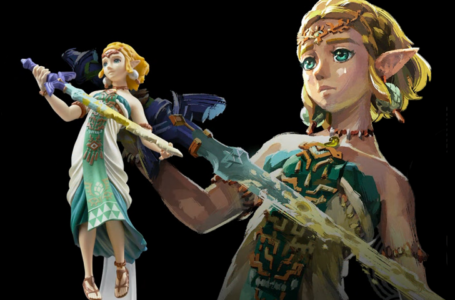Let’s get logical with Hatsune Miku Logic Paint S
Everybody loves Hatsune Miku, the enduring mascot of Crypton Future Media’s range of Vocaloid singing synthesisers — and star of quite a few video games at this point. And everybody loves nonograms or picross puzzles, the number-based pixel art “picture crossword” puzzles that we’ve seen numerous forms of over the years.
Hatsune Miku Logic Paint S combines both of these joyful things into one delightfully entertaining package for Nintendo Switch. And, at the time of writing, you can grab it on the Nintendo eShop for a launch discount of 25% off its regular price.
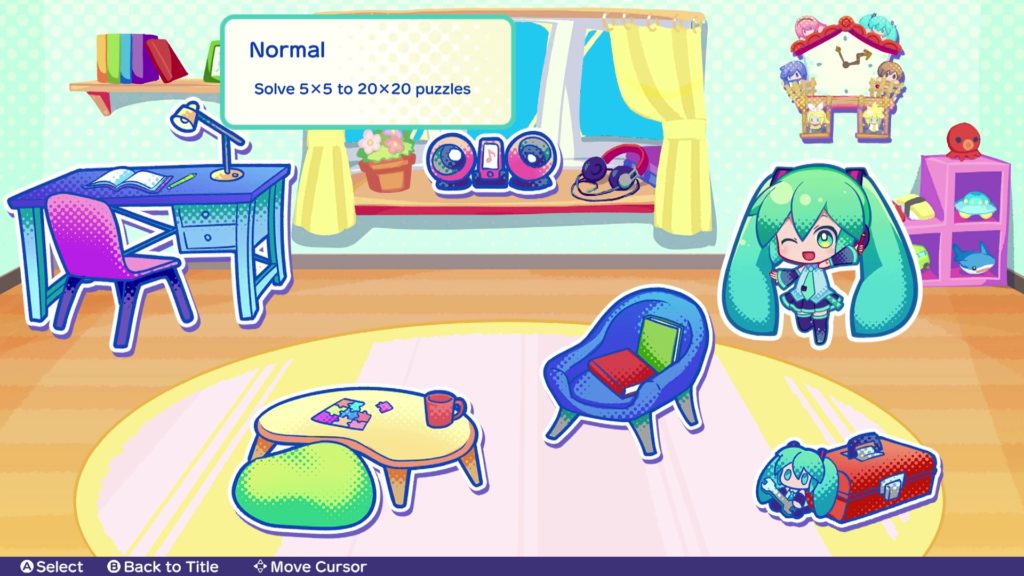
Hatsune Miku Logic Paint S has its origins in a mobile game called MikuLogi, released for iOS and Android devices in March of last year. Don’t run away screaming in fear of obtrusive advertising, in-app purchases or gacha mechanics, though; Hatsune Miku Logic Paint S has been completely rebuilt as a premium game for the Nintendo Switch — not that the original game had too much in the way of obnoxiousness, but this new edition also strips out what little advertising the mobile original had.
Hatsune Miku Logic Paint S features more than 350 puzzles, including some 20×20 puzzles that are brand new to the Switch version, and compared to the original mobile version there’s a broader range of Vocaloid-related fanart you can unlock through playing — not just of Miku, but of other Crypton Future Media virtual stars such as Kagarine Rin and Len, Megurine Luka, MEIKO and KAITO.
The game was developed as a collaboration with Crypton Future Media’s “Piapro” initiative, which is the company’s online community for creating and sharing derivative works created with and inspired by Miku and friends. Content from Piapro used in the game includes a variety of music tracks specifically created for Hatsune Miku Logic Paint S, some delightful chibi-style character designs to accompany your puzzling — and, of course, the aforementioned fanart.
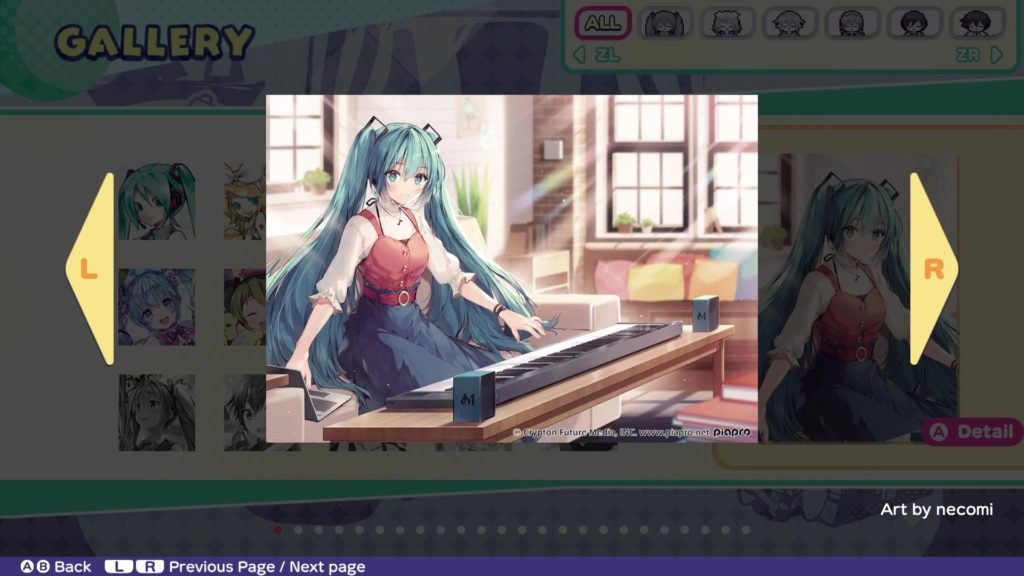
For those of you who have somehow gone this long without coming into contact with nonograms or picross puzzles, here’s how they work. In Hatsune Miku Logic Paint S, you’re given a grid of between 5×5 and 20×20 in size, and your job is to determine which cells on this grid should be “filled in” to create a pixel art design.
In order to figure this out, you’re given numerical clues on the rows and columns that tell you how the filled-in pixels are grouped together, but not their exact position. For example, on a 5×5 grid, if a row says “5” you know that every cell on that row must be filled in, but if it says “4” or less you’ll have to use some logical thinking to determine where the “blank” spaces will be.
Typically, the way of working out these puzzles involves finding a good starting point, and then the whole thing ends up being a bit of a chain reaction from there. It’s enormously satisfying once you get in the zone, but can be a little daunting if you’re not super-familiar with this type of puzzler. Thankfully, Hatsune Miku Logic Paint S’ 5×5 beginner puzzles are an excellent introduction to the game; it’s not until you get onto the larger grids that you’ll start having to use some more advanced techniques.
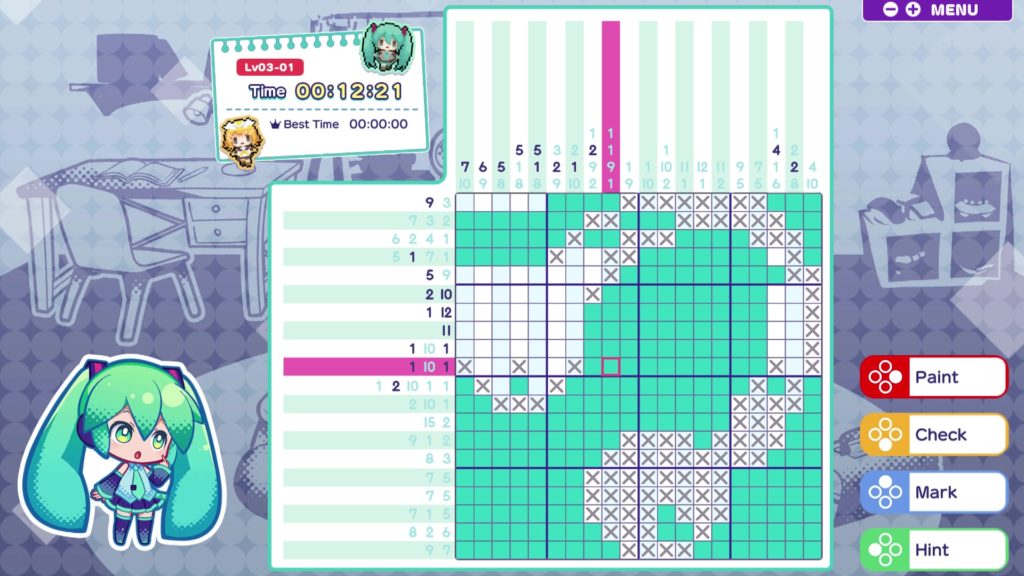
The game is presented well, featuring some delightfully chipper music and colourful artwork. By progressing through the game’s “missions”, which primarily consist of successfully completing each puzzle, doing so without using the limited “hint” function and doing so without making any mistakes, you earn stars which can subsequently be spent on new pieces of music. You can then assign any of your unlocked tracks to the home screen and the puzzle screen to customise your experience.
This is the only place where there are a few minor nitpicks with Hatsune Miku Logic Paint S: everything to do with the music is a bit clunky. The screen where you unlock and listen to the music tracks you’ve unlocked is completely separate from the options menu where you assign the tracks to the menu and puzzles, for example, making it difficult to find the right track at times — particularly as most of the song titles are in Japanese text.
It’s also a bit of a shame that you can’t assign multiple tracks to the menu and the puzzle screen and have the game pick one from your selection randomly; if you want some variety, you need to go in and change the song manually whenever you feel like something a bit different.
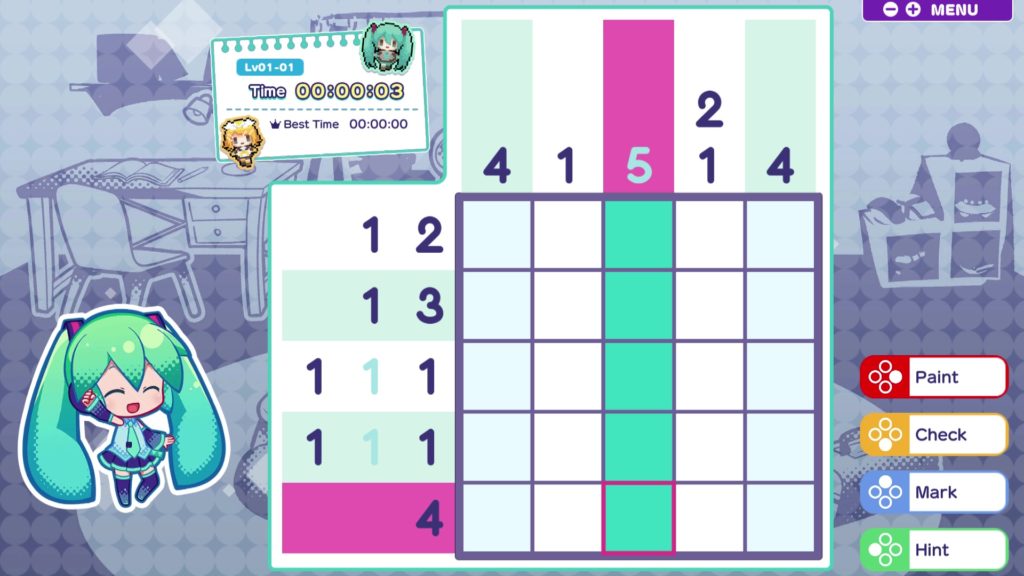
These are seriously minor issues, though; the rest of the game is extremely solid and enjoyable, if rather “safe”. If you’ve played any other nonogram or picross game in the last few years, you’ll know exactly what to expect here — there’s nothing particularly surprising or special that will show up during the game. It’s simply a good implementation of the nonogram format that is a great fit for Nintendo Switch — and a perfect game to have downloaded to your SD card for when you’re carrying your system around in handheld mode.
The easier puzzles can be banged out in less than a minute once you know what you’re doing, while the larger puzzles offer more substantial challenges. And with more than 350 puzzles to get through — the majority of which can be found in the harder difficulty settings — there’s plenty of game here to keep you busy in the long term.
Join The Discussion
Rice Digital Discord
Rice Digital Twitter
Rice Digital Facebook
Or write us a letter for the Rice Digital Friday Letters Page by clicking here!
Disclosure: Some links in this article may be affiliate links, which means we may earn a small commission if you make a purchase after clicking on them. This is at no additional cost to you and helps support Rice Digital!
- Letter from the Editor: passing the torch - June 30, 2023
- Super Woden GP 2 is looking promising - June 30, 2023
- Inti Creates is making a 32 bit-style Love Live action platformer - June 26, 2023




